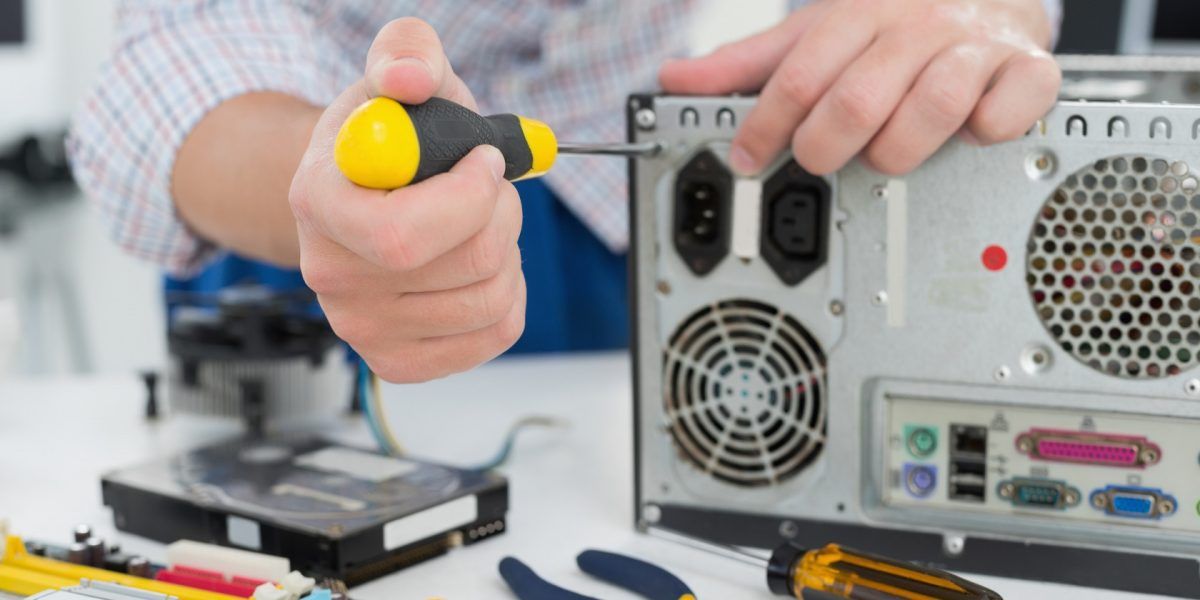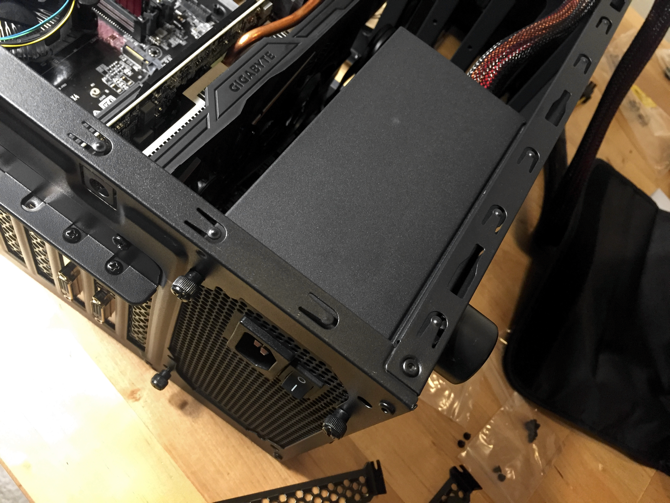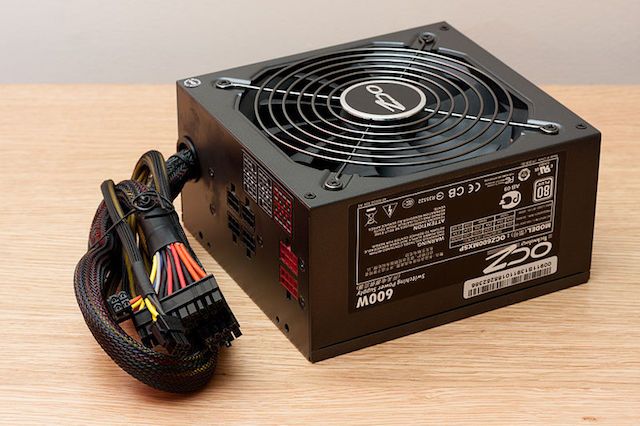One of the best ways to reduce the cost of upgrading your PC is to re-use some old components. You can retain some parts, like the sound card, DVD drive, and particularly the power supply unit (PSU).
In the case of the PSU, this could save you up to $150. While the graphics card, CPU, motherboard, and RAM might need upgrading, the PSU doesn't.
But is your old PSU truly reusable? Can you use an old power supply for a new computer? Let's find out if will be reliable and have the power required.
Finding and Removing Your PC's Power Supply Unit
Desktop PCs, whether tower (vertical) or horizontal, will have the power supply unit on the reverse. Alongside all other cables for sound and USB devices, you'll find the power cable connected. This will be accompanied by a standard on-off rocker switch and an outlet fan for cooling.
Now you know where the PSU is on the back of your PC. But what about on the inside?
Before proceeding, ensure the PC is shutdown and the PSU disconnected from the mains. You should also take anti-static precautions to maintain the integrity of your hardware.
If you remove the case, you should see the PSU, or at least work out its position. But it might be difficult to physically reach. This will typically be down to the next of wires, but it might also be due to the position of the DVD drive, or even the CPU fan and RAM.
To remove the PSU, safely remove the power cables to the motherboard, CPU, disk drives, and other components. Bundle these over the side of the case, briefly securing with a cable tie.
Next, remove the PSU's securing screws on the back of the case. Save these for later, then pull the PSU out of the PC case.
You should always remove the PSU from the case first when dismantling a PC.
Understanding Your Power Supply
While the specs of your computer system can be analyzed with benchmarking tools the PSU is different. To learn more about it, you'll need to look at the device.
You should have noticed that the PSU features a label listing its maximum output and other information. While the labels differ depending on model and manufacturer, there should be a section describing maximum load or output.
That is the total amount of power that the supply can handle overall. You can use that figure and compare it to what's recommended for the new hardware you'd like to purchase.
Most PSUs also feature a section describing output for each type of voltage. That's the list +5V, +3.3V, +12V and etc. Each value is shown alongside an amp rating. Pay close attention to the 12V value (aka rail). The graphics card, which is often among the most power-hungry components in a system, draws power from it.
To run a moderately powerful graphics card, look for a PSU with around 30A on the 12V rail.
If the maximum wattage and 12V rail are enough for the components you're installing you should have no problems.
Will the Old Power Supply Remain Reliable?
Some manufacturers are reliable and make power supplies that perform up to or even beyond their specifications. Others are more concerned with shifting units. To find out more, find your PSU's brand (listed on the label) and check its reputation online. No brand? Maybe time to buy a new PSU.
Bad things can happen with poorly manufactured power supplies. A PSU labelled 750-watt might struggle to supply over 500 watts. Some supplies will even smoke and burn when they fail.
While old power supplies might still work, it could be because your old PC hardware didn't need too much power.
Upgrading the CPU, motherboard, and graphics card could change that.
A supply that fails can, in the worst case, take out other components in your PC or even catch fire. Upgrading to a reliable drive from a company like Antec, Corsair or Cooler Master is often the better choice.
Connect an Old Power Supply to a New Motherboard
After confirming the capability and capacity of your old PSU, make some checks:
- Dust the PSU down---you might need a vacuum cleaner to draw dust out from the fan.
- Ensure cables are all in good condition with no splits in the insulation.
- Confirm the plugs are not cracked or broken.
- Compare the plugs on the PSU with the motherboard and other new components you're planning to upgrade.
(As some connectors are omitted on old power supplies, this could prevent using an old PSU in your "new" computer.)
While modern motherboards accept a 24-pin primary power connection, some old PSUs will only have a 20-pin plug available. Fortunately, these are rare---while the 20-pin plug might work, it is best avoided. If there is also a 4-pin (two by two) connector you should be okay. This will probably feature a slot to fix to the 20-pin strip.
Current computers require more power than a 20-pin supply can deliver. Relying on such a PSU is likely to result in power failures, which can cause issues with the operating system. This can also impact the integrity of valuable personal data stored on your hard disk drive (HDD).
Some motherboards require an 8-pin (two rows of four) secondary connection for the CPU. A CPU will often run without with just a 4-pin connection, but it may be unstable in certain situations. A Molex to 8-pin ATX adapter usually resolves any problems that might occur, such as from overclocking.
Connecting Modern PC Components to an Old Power Supply
It isn't just the motherboard you'll need to connect to the old PSU. Graphics cards and storage devices need power and there's a good chance you'll need some adaptors for compatibility.
Video cards were once content drawing power straight from a motherboard. While most motherboards feature integrated video output, gaming requires discrete graphics cards.
While prices (and power) vary, even inexpensive cards usually need a dedicated 6-pin PCI Express power connection. Some even need two 6-pins or an 8-pin. You'll often be able to power the card using multiple Molex connections with an adapter.
Some video cards might come with these adapters in the box. But note that more powerful cards may not work with this solution.
When it comes to HDDs and Solid-State Drives (SSDs), you may find the old PSU lacks SATA power connectors. Again, an adapter can be used, this time a Molex to SATA adapter.
What If You Can't Use Your Old PSU?
Hopefully you'll find that you can use your old power supply and save yourself a few bucks. Just make sure it's up to scratch, take some time to clean it, and ensure the cables aren't worn. Check the voltage rating to ensure it's suitable for your new PC build.
If not, it's time to replace your old power supply.
You'll find the choice of replacement power supply units is considerable. To help, check our guide to buying a new PSU before you commit to spending.\
Image credit: Wavebreakmedia/Depositphotos



